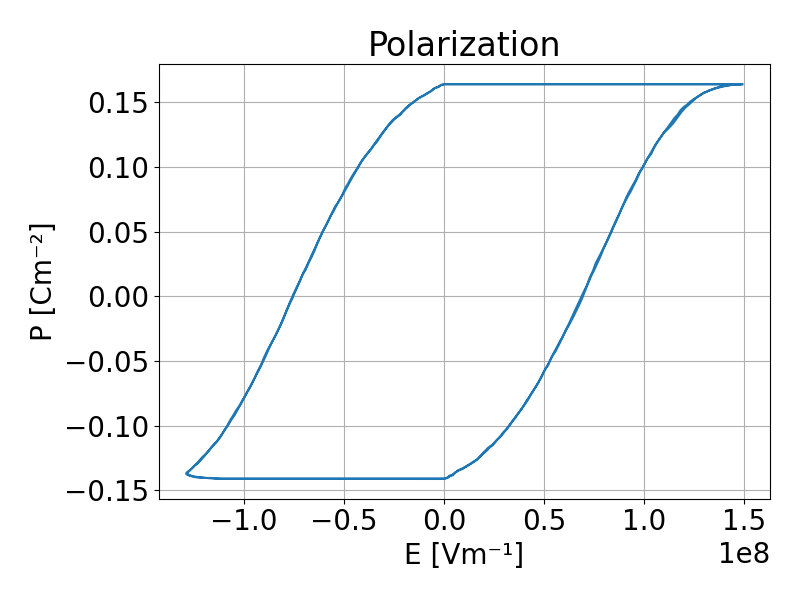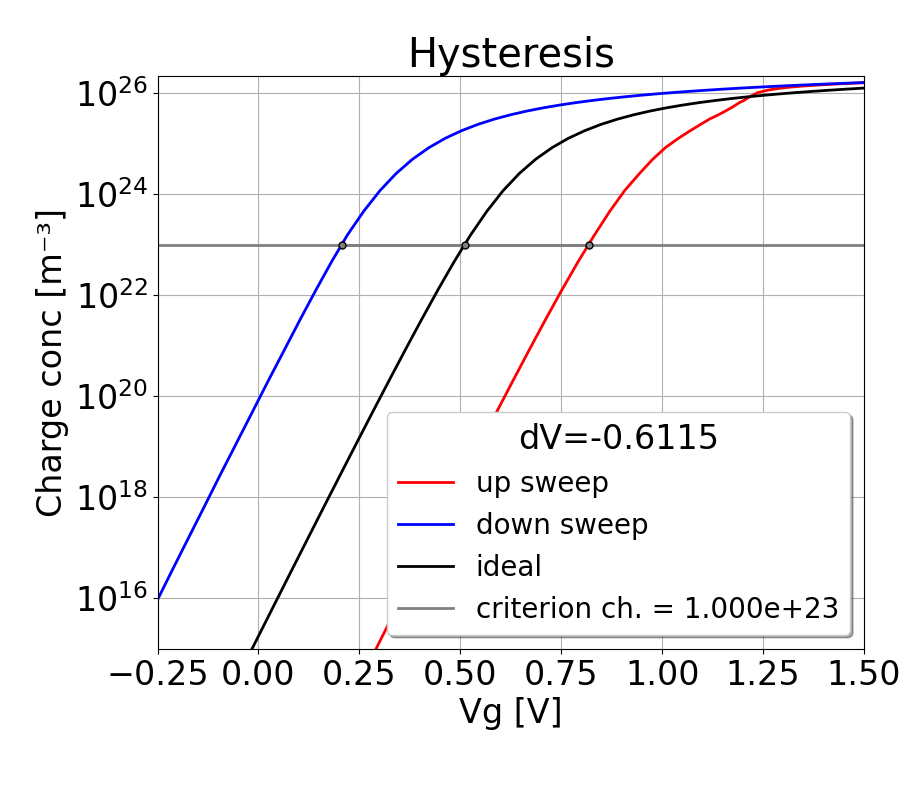 |
|
||||
BiographyJoël Kurzweil was born in Graz, Austria. He received his BSc and MSc degrees in Physics from the University of Vienna in 2017 and 2021, respectively. During his master’s thesis, he undertook analytical and numerical studies of turbulent gravitational phenomena related to the instability of Anti-de Sitter (AdS) space. After graduating with distinction, he worked in industry as a data scientist. He joined the Institute for Microelectronics in August 2023, where he is pursuing his doctoral degree. His current research focuses on investigating insulators for 2D materials for next-generation electronic devices, as well as on the modeling of reliability phenomena in 2D material-based field-effect transistors. |
|||||
Compact Modeling of Ferroelectric Devices in Comphy
In the search for alternative non-volatile memory technologies, ferroelectric materials continue to be investigated. Especially the discovery of ferroelectricity in hafnium oxide (HfO2) has attracted considerable attention. This material is already used as a gate oxide in commercially available devices and is thus integrated into existing fabrication processes. Furthermore, HfO2 retains its ferroelectricity even when thinned down to the nanometer scale, making it particularly attractive in pursuing ever more miniaturized devices.
In contrast to “conventional” dielectric insulators, whose polarization reacts linearly to an applied external electric field, ferroelectric materials can retain a spontaneous polarization even when the electric field is switched off (see Figure 1). When used in a device, this effect can be exploited to store information in one bit, with “0” or “1” corresponding to one of the “up” or “down” polarization states, respectively. This technology’s main advantages are low power consumption, fast read/write speed, and non-volatility. This way of storing information is non-volatile since the spontaneous polarization state once switched to the desired direction, can be maintained without needing an external electric field. Ferroelectricity is thus an essential application for non-volatile memory devices (“FeRAM”).
In order to efficiently model ferroelectric devices, we extend the Comphy framework to include a compact model describing the ferroelectric polarization dynamics. In the Preisach model, the ferroelectric response is described by an ensemble of discrete switching units called “hysterons.” Each hysteron can have a polarization state equal to -1 or +1. The total polarization is given by the average polarization of the hysterons weighted by a factor called the remnant polarization. Two fields are associated with each hysteron, called the “flip up” and “flip down” fields. If a hysteron in a certain state experiences an applied external electric field, these fields determine its polarization response. A typical phenomenon observed in ferroelectric devices (e.g., metal-ferroelectric-oxide-semiconductor capacitor) is a counter-clockwise hysteresis curve (see Figure 2).
As a next step, more accurate compact models of ferroelectricity will be included in the Comphy framework. One crucial aspect to include in the model is the temperature dependence of ferroelectricity. This will enable more accurate modeling of ferroelectric devices.

Fig. 1: Polarization as a function of the electric field. A non-zero spontaneous polarization is observed when the electric field is switched off.

Fig. 2: Surface charge concentration as a function of the gate voltage. A shift in the threshold voltage (defined by the charge concentration criterion for illustrative purposes) can be observed during the down sweep.


